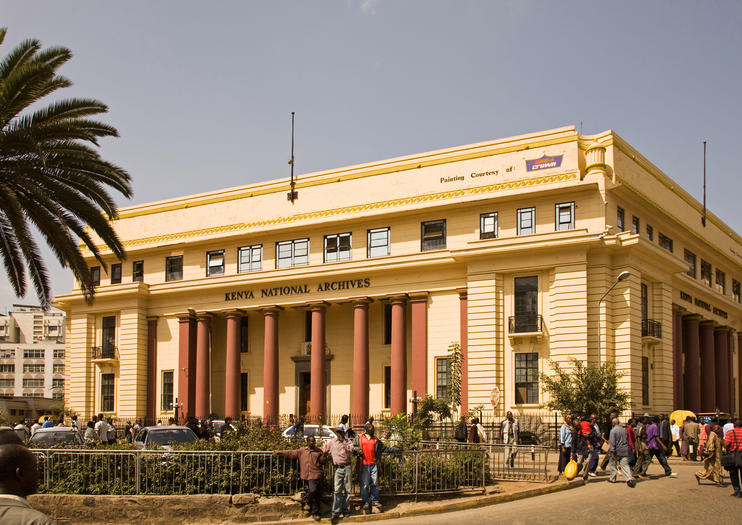From Past to Present

One night in September 1939, a fire mysteriously broke out and destroyed the Government Secretariat Offices in Nairobi. The unfortunate tragedy, inevitably, had disastrous effects on the British colonial government’s records of the earlier years. Fortunately, the government was able to revive its offices through cooperation from members of the public and assistance from other government departments. However, despite this setback and a notice to revive all records lost by then acting Governor, Sir Walter Harragin, no efforts to develop new records were created to replace the destroyed documents.
Years later, the work that had failed to be completed caught up to the new government. In 1954, the colonial government came to the agreement that, unless colonial heritage was preserved, posterity would judge past governments harshly. Between 1954 and 1955, budget provisions were made for the establishment of bulk centralized storage for all dormant information. All government administrators were asked to transfer these records into the custody of this emerging archival infrastructure.
The process wasn’t easy, but within ten years, a search room was opened on the second floor of Jogoo House, merged with The Central Government Reference and Legal Deposit Library. The building was under the Ministry of Commerce and Industry, who, in 1967, demanded for its space. Thus, the search room moved to the ground floor of the same building. The library’s books were relocated to the Jogoo House basement.
With time came an increase in the number of researchers, and the space at Jogoo House became inadequate. The Public Archives Advisory Council under Chairman Humphrey Slade negotiated for a lease at The Ismail Rahimtulla Walji Trust Building on Mfangano Street. The request was granted and on 25th February 1970, the National Archives Library was opened and provided reference and search room services. That same year, Ian McLean, a consultant on a UNESCO funded records management mission to Kenya examined the problems faced by government offices in Nairobi. He proposed the establishment of Regional Record Centres countrywide. In addition, he suggested the staffing levels of each Centre and outlined the operations and professional services that could be offered. McLean’s work bore fruit.
In 1980, a records centre was opened in Mombasa, and the following year one was opened in Kakamega to cater for Western Province. Nakuru’s Records Centre was opened in 1983 to cater for the Rift Valley region and thereafter a Records Centre was opened in 1990 in Kisumu for Nyanza Province.
Meanwhile, across town, on Government Road, a building whose first stone was laid in 1921 and completed in 1931 became the headquarters of the National Bank of India. Kenya Commercial Bank took over the building between 1970 and 1978 before they moved across the street to KENCOM House. The building was then acquired by the government who intended on housing the Transport Licensing Board, but the needs of the Kenya National Archives department seemed more urgent. In 1978, the National Archives found a new – and permanent – home in this building where it is presently situated.
The Kenya National Archives is the hub of history. With the ground floor containing traditional artefacts as part of its museum, and the first floor holding a research room, and the second section of the museum. The daily rate here is Ksh. 50 for Kenyan citizens, and annual membership is Ksh. 200 which allows unlimited access to the research room. So, if history excites you, this is one place worth spending time at.
#KeLibraries





2 Comments
Wow I never knew this, very informative
Very interesting